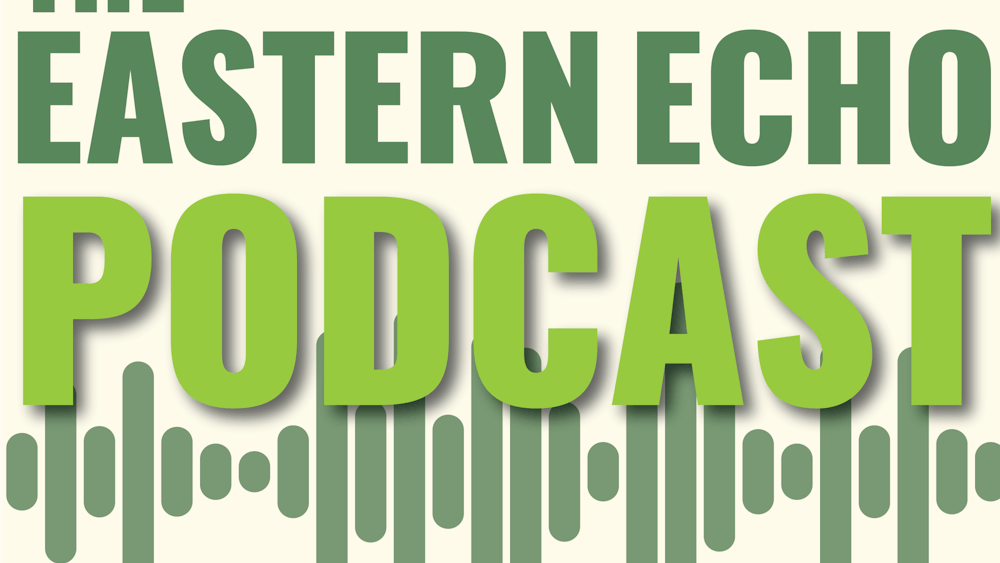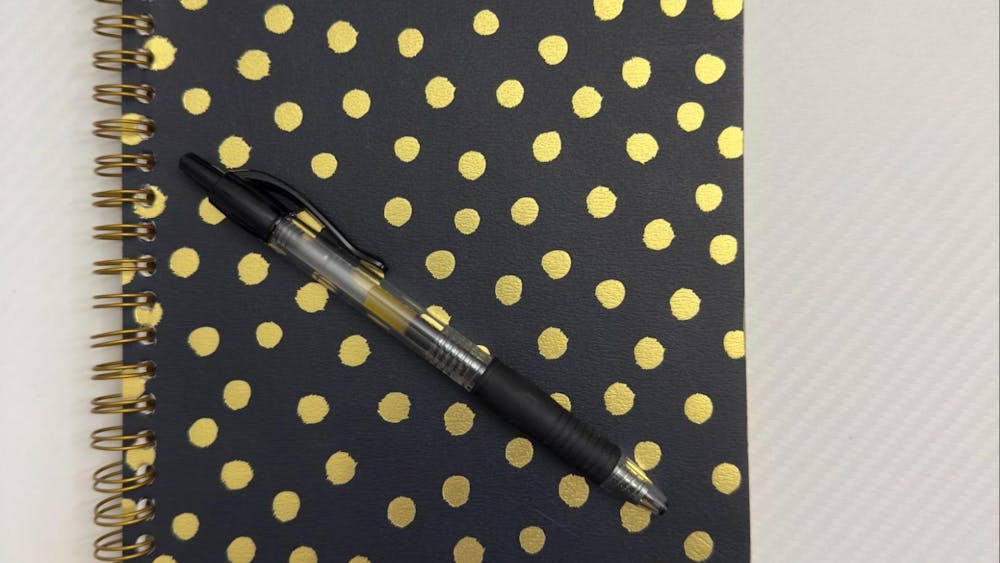Eastern Michigan University percussion, orchestra, and jazz ensembles have adapted to follow COVID-19 safety guidelines, from the way they hold practices to the way concerts are formatted.
The Alexander Music Building is now open from 8 a.m. to 5 p.m., Monday through Friday. Before COVID-19, the building was open to students to practice anytime from 7 a.m. to 10 p.m. Monday through Saturday and 1 p.m. to 10 p.m. on Sundays. This is because EMU requires monitors to check student’s and faculty’s COVID-19 passes every time they enter the building.
In addition to fewer open practice hours, the percussionists, pianists and organists must schedule their practice times in advance. Other musicians are able to walk in and reserve a room the same day.
“I think the students are doing the best that they can with the situation that has been presented,” Chad Hutchinson, the Director of Orchestral Activities, said. “All of the attitudes of the students at EMU have been very positive about following safety protocols.”
EMU’s Jazz Ensemble
When classes went online this fall, the Jazz Ensemble adapted accordingly. Students practiced improvisation and self-guided work on Zoom, where they could still share and receive feedback.
“It’s not what any of us wanted, but I am so proud to be a part of a university that is taking [COVID-19] this seriously,” Professor Donald Babcock, the director of the Jazz Ensemble, said.
Now that the students are back in person, the Jazz Ensemble can practice together for 35 minutes at a time, with 20 minute breaks to clear the air. They meet Tuesdays and Thursdays from 5 p.m. to 6:30 p.m.
“I would say a majority of students are coming to class prepared, and more so than they used to be, which is a neat surprise,” Babcock said. “I feel like when we are together in our limited times we are actually more productive because people are coming better prepared with the time that they are finding otherwise not being in class or commuting.”
All students still wear masks, some have special openings that allow them to still play their instruments. The instruments also have coverings at the ends and students practice social distancing.
The Jazz Ensemble is planning to live stream their first concert this semester on Oct. 20. The live stream option was chosen in the hopes of making it feel like a regular concert. The concert is available for public viewing and starts at 7:30 p.m., to attend, click here. The Jazz Ensemble also plans to keep the original date for their second concert, which is Dec. 8.
“I would have made it work one way or another, no matter what protocols and restrictions we were given for the semester. I could have gone on the rest of the semester just doing improvisation over Zoom and maybe some history, but when you have a performance and interactive class, where you’re doing stuff together in the same space...it is nice to actually be able to do it,” Babcock said.
EMU’s Percussion Ensemble
When classes first went online due to COVID-19 Professor John Dorsey, who has been teaching as a professor of percussion at EMU since 1997, shifted to teaching through Zoom and posting asynchronous lessons online. Much of the course work given by Dorsey was written assignments. This was an effective virtual way to teach his students, although he felt a major disconnect with his students.
Many percussion students do not own their instruments, so Dorsey loaned out most of the school instruments so that students could continue to practice from home. Percussion instruments tend to be large and loud leading to students having difficulty finding space to store them or to practice without disturbing others.
Now that students are back on campus, Dorsey has programmed all of the pieces to use fewer students. In the past, he would conduct eight to 12 students per piece, but he has since shrunk the number down to four.
“Because we’re back meeting in person, it is not as radically different as many other classes are,” Dorsey said. “I have been encouraging all my students that I see to practice safety protocols, not only here on campus, but off-campus as well so they don’t bring anything to campus and we can continue to do this. I think they know that we are fortunate to be meeting in person and that if any of them do anything stupid and they bring this on campus they can ruin it for everyone, so I try to remind them of that on a regular basis.”
Practices are held for 45 minutes and students are required to wear masks, maintain social distancing of six feet, and disinfect everything after use.
Besides group practices, students are expected to practice at least two hours a day. The change in hours at the Alexander Music Building means students have to plan their practice times in advance.
“For some students, I see a benefit that they are actually practicing more and regularly . . . Less freedom makes it more restrictive and more focused,” Dorsey said.
In a typical fall semester, the Percussion Ensemble has one major performance in late November or early December, as well as a joining performance with the orchestra for a Halloween concert. This semester they will only do one major performance on Dec. 1, which is planned to be a live stream from EMU’s Pease Auditorium.
EMU’s Orchestra
Before the COVID-19 pandemic, EMU’s orchestra was able to met with wind and brass students, adding up to around 50 students. Now just the stringed instruments meet, in two separate groups of ten musicians each.
Rehearsals are socially distant, with masks required, and last 40 minutes. Once the 40 minutes are up, students disinfect their spaces and leave the room for 25 minutes, to air out. Then the next group comes in for their practice.
Occasionally Pease Auditorium is open for the entire orchestra to practice. When that happens the stage extension is put into place and they are able to meet as a group of 20 musicians. After 40 minutes the group takes a 25 minute break, where they go outside to work on team building activities, followed by another 40 minute rehearsal.
Previously, students would meet as a group for six hours a week. Scheduling now, however, does not permit more frequent rehearsals. Students are happy for the time they do have.
“Just being able to be back together as an ensemble and make music together has been really warming to the heart. I think for everyone involved to be able to have human interaction again and to be able to express ourselves musically has been an amazing experience,” Hutchinson said.
A concert is still set to take place later in the semester, but it will be entirely virtual.
“We are still creating a concert, just in a different way. It can have a lot of nice outreach, this way parents and friends and family can still see their son [or] daughter playing as well and students can still have a goal of working towards a concert typesetting,” Hutchinson said.
The location of release is still unknown, but will most likely be on Vimeo.
For more information on upcoming events for EMU’s School of Music and Dance, visit their events website.










